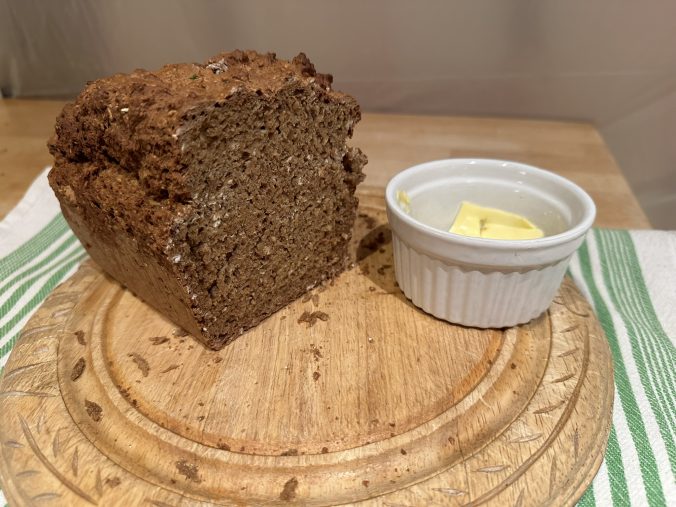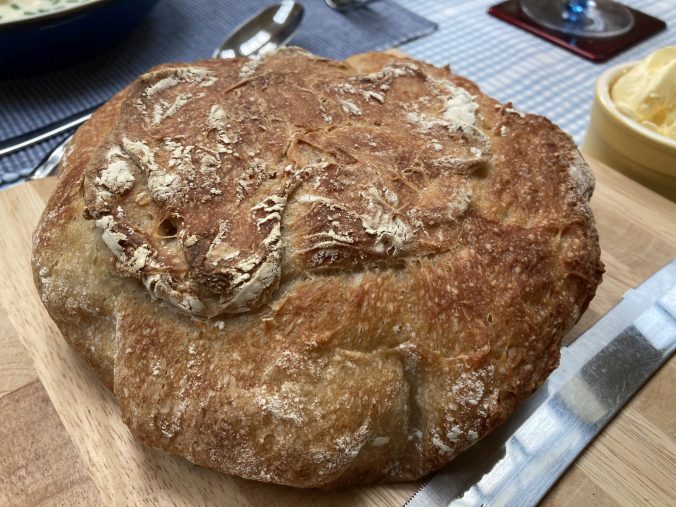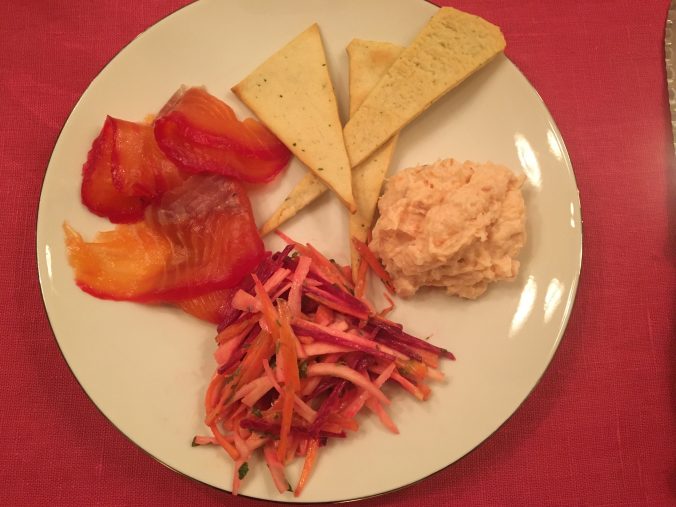French bread is often very crusty with a soft fluffy inside. I have always assumed that this type of bread needs special flour and expertise, but not so. A chance find on the internet showed up this recipe. This is a bit weird – you will need a cast iron casserole, but trust me. Have a go!
- 360g plain flour
- 1 tsp sugar
- 1 tsp salt
- 1.5tsp instant yeast
- 300ml warm water
Throw all of this in a food processor and process for 45 seconds. Alternatively do it the hard way and knead by hand for 10 minutes! This will produce a very sticky dough so good luck with the hand method.
Let your dough rise for an hour in a covered bowl left in a warm place. Use flour on your hands and in the bowl to try and keep it from sticking, but you probably won’t. No matter, at this stage anyway.
Do you have a proving basket? Thought not, neither did I. After the hour is up the dough will have doubled in size, the yeast inside is going crazy. Try and get it out of the bowl, then gently knock it back by taking the floppy sides and folding them over into the middle to make a sort of cushion. Lots of flour will be needed to keep it from sticking. This is OK.
Now flour your proving basket/bowl. Carefully place your dough into the bowl, with the folded sides down. Allow to rise again for half an hour.
Meanwhile heat your oven to 230C with is very hot. Put your cast iron casserole dish into the oven to heat up. If you keep the lid out, you can use it as a cutting guide to make a baking parchment sling for your dough. The sling is simply a piece of paper the size of the base of the casserole, with two strips extending from opposite sides to make the handles.
When all is ready, upturn your proving basket/bowl onto the paper and if you floured it enough it will flop out. If not you may have to do running repairs (as I did). The only difference is that the top won’t look as pro, but you will be forgiven when they eat it.
Take your casserole dish out of the oven, use the paper sling to put the delicate dough into the casserole, put the lid on and put it back into the oven for 30 minutes. The casserole will get all steamy inside which is what makes the crusty surface of the loaf.
After 30 minutes, take the lid off. The bread will have risen but it won’t look too brown. Put it back in the oven for 10-15 minutes. Now you can take it out and impress your family and friends with an amazing crusty artisan loaf!
If all that makes no sense at all, watch the videos on the original recipe site







